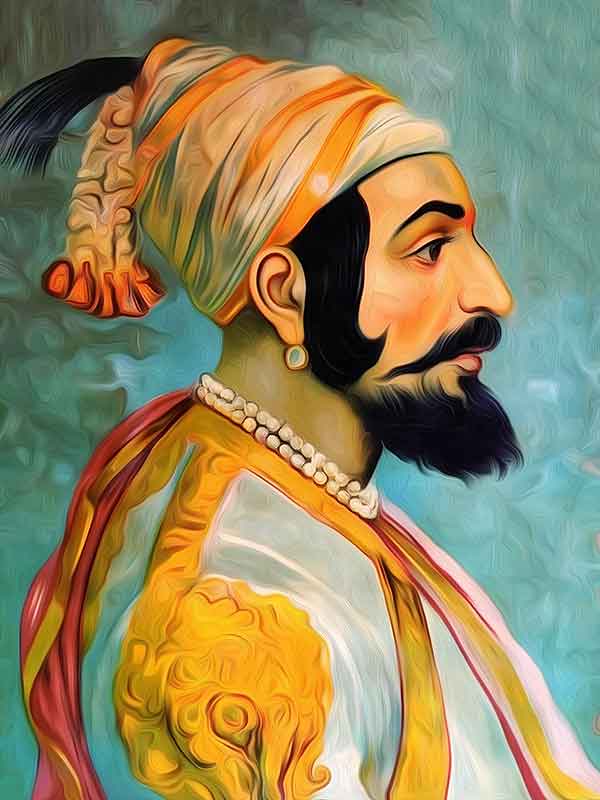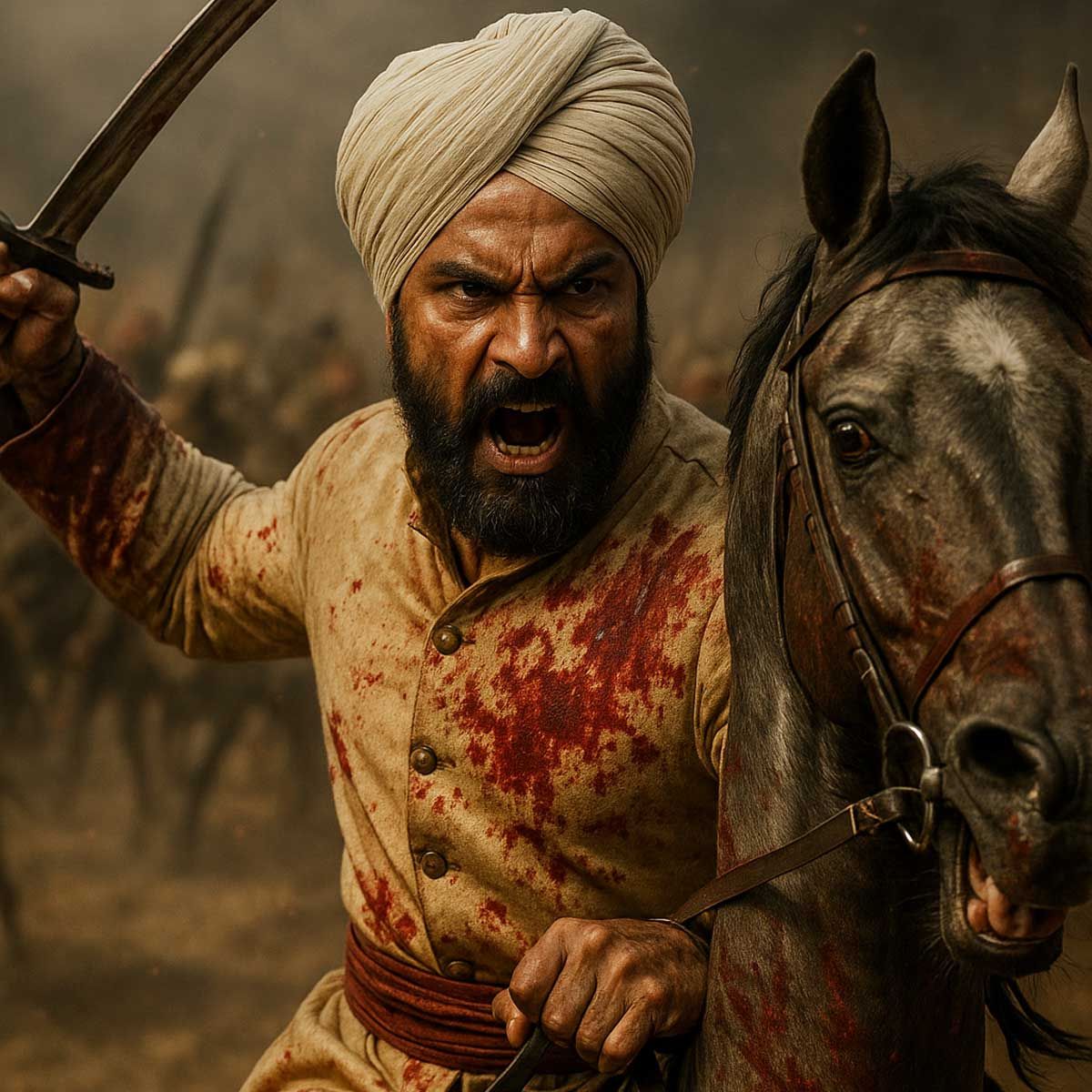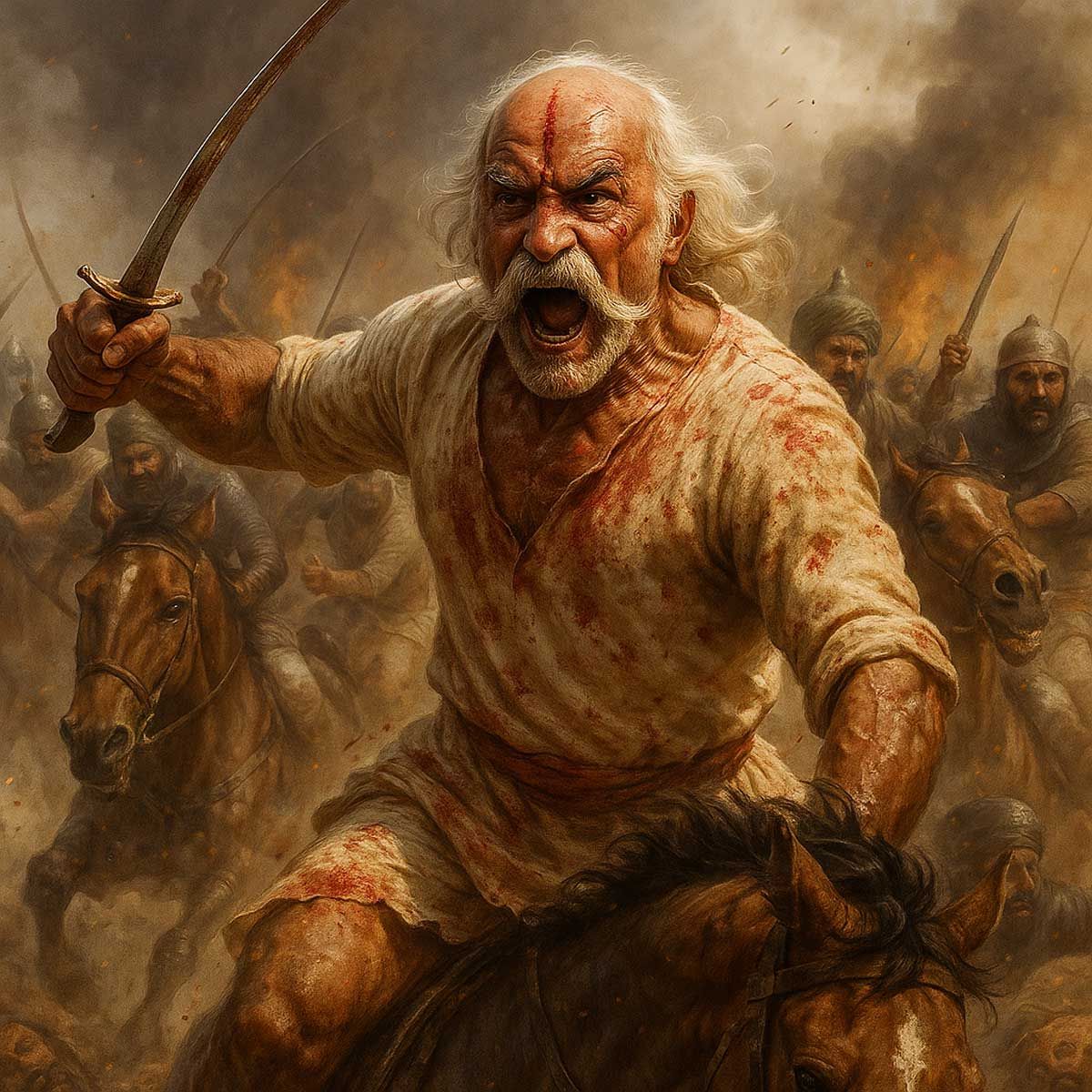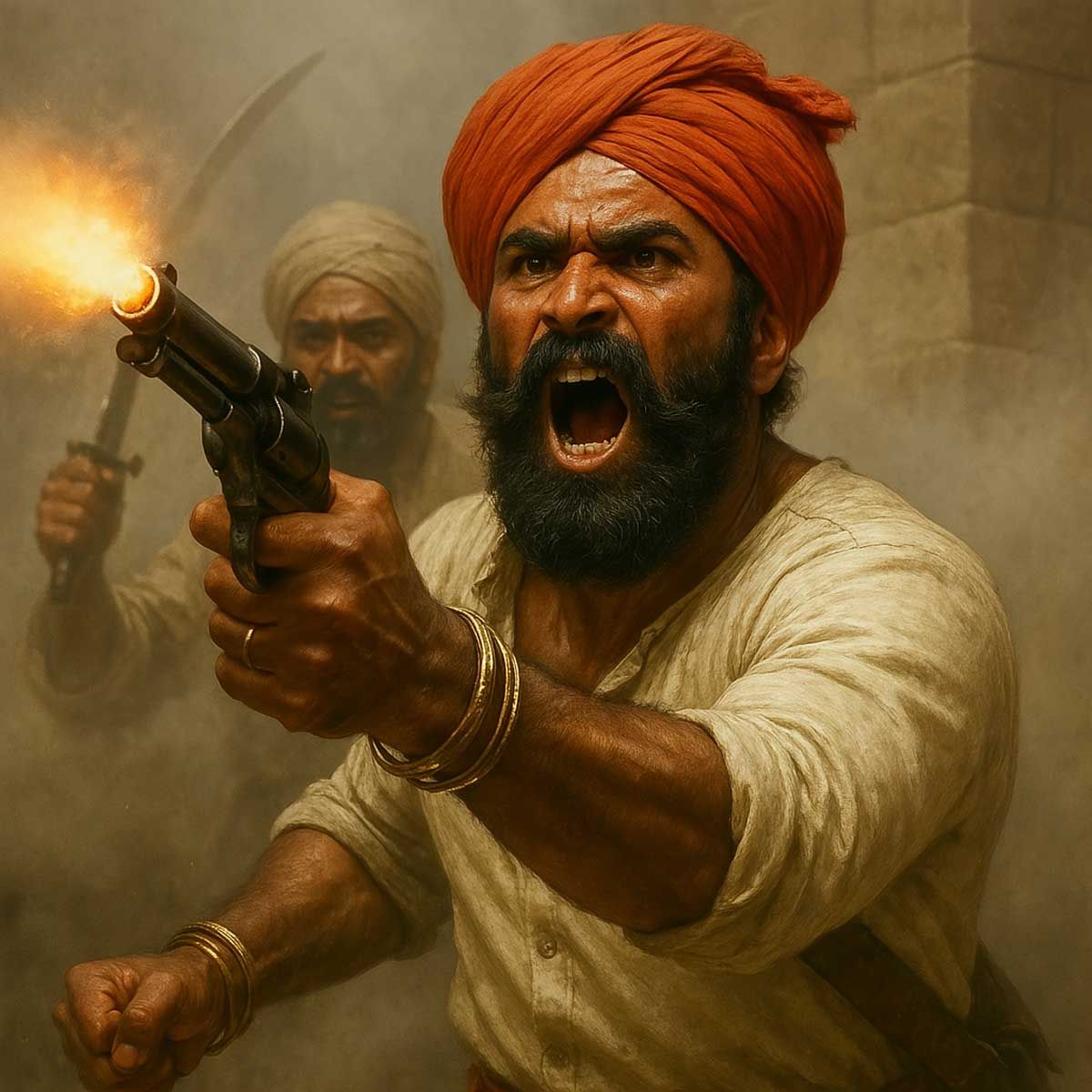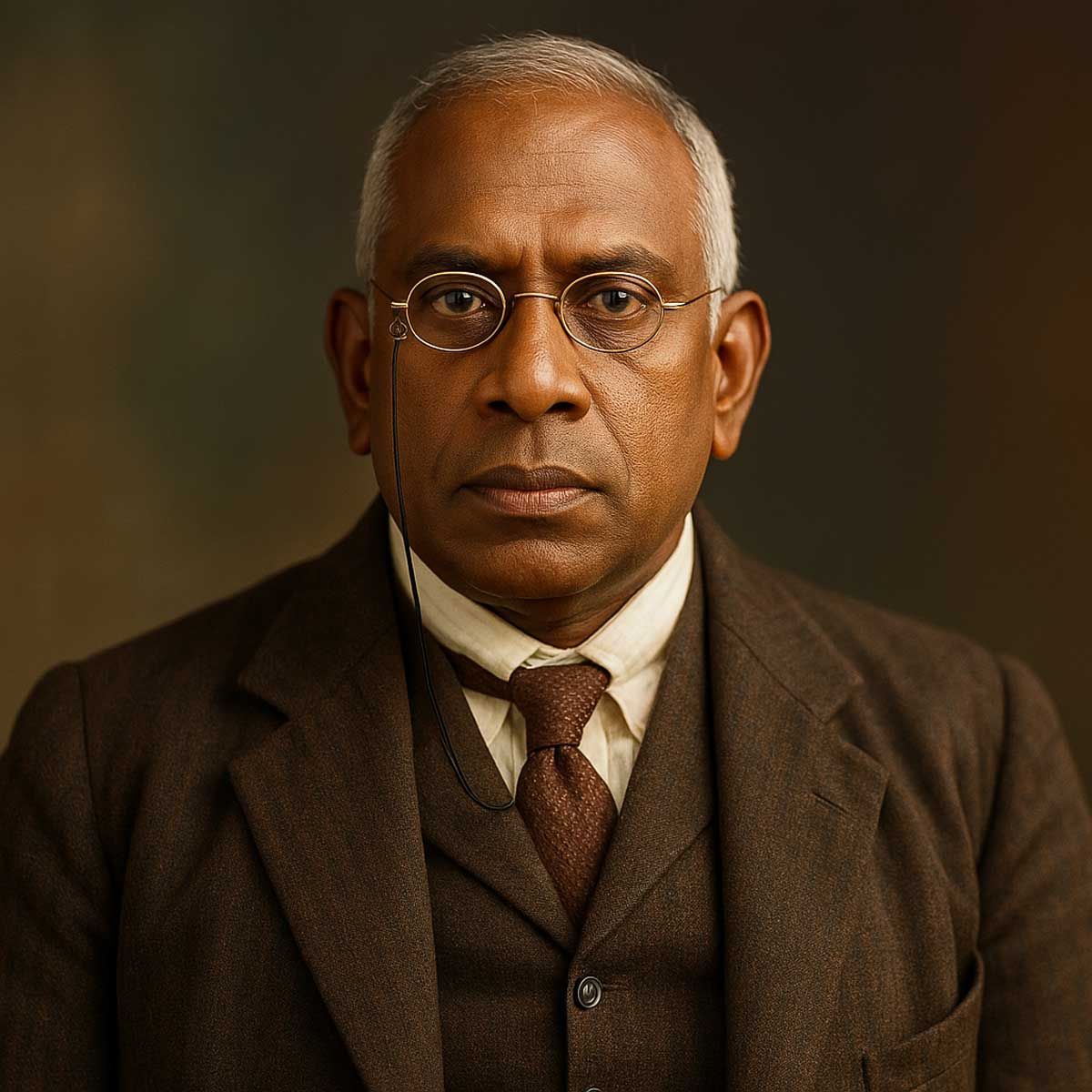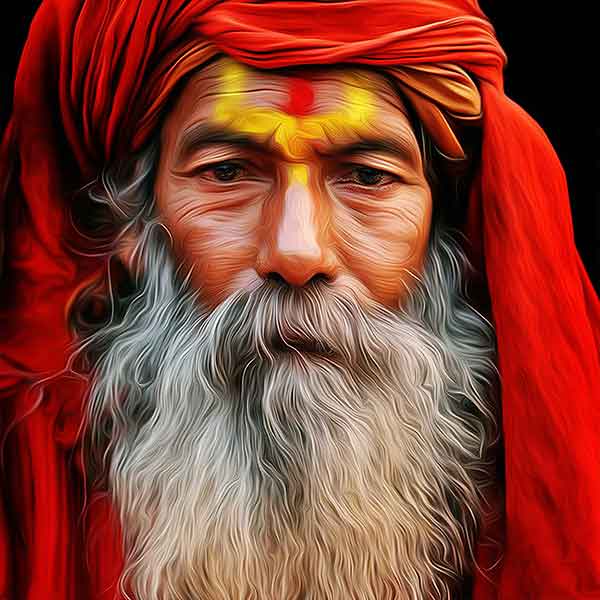More Coverage
Twitter Coverage
Satyaagrah
Written on
Satyaagrah
Written on
Satyaagrah
Written on
Satyaagrah
Written on
Satyaagrah
Written on
Join Satyaagrah Social Media
"कल्कि": Sambhal, the prophesied birthplace of Kalki Avatar, saw Harihar Mandir fall between Balban’s 1254 massacre and Sikandar Lodhi’s rule, as Carlleyle’s 1879 ASI report exposed temple remains beneath Shahi Jama Masjid, rewriting history
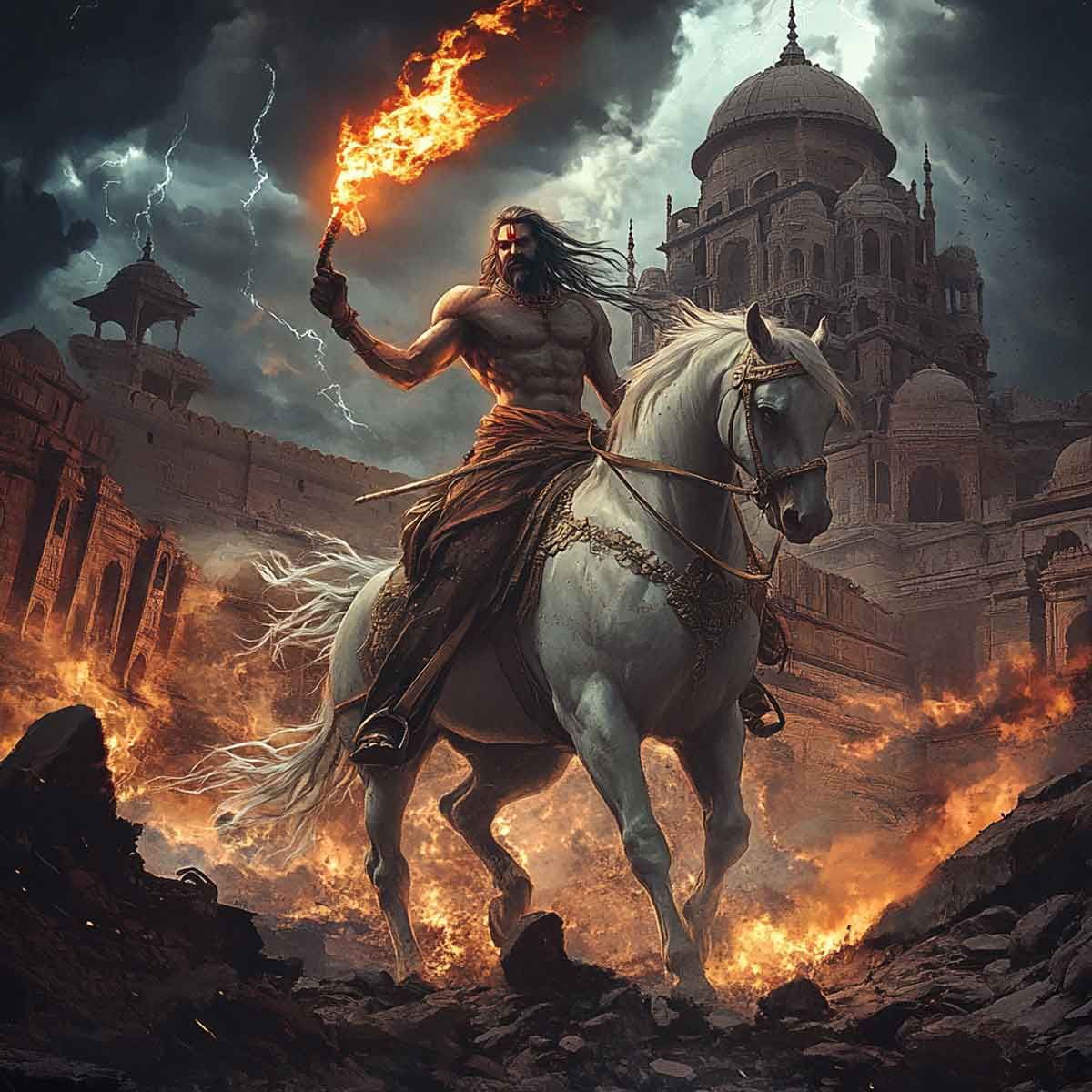
A legal dispute over the Shahi Jama Masjid and the Harihar Mandir has gained national attention, as a Bench led by Chief Justice Sanjiv Khanna and Justice Sanjay Kumar reviews a petition filed by the Jama Mosque Committee. The petition challenges a civil court’s order that permitted a survey of the mosque to determine whether it was constructed over the remains of a Hindu temple. The issue took a violent turn on November 24, during the survey in Sambhal, leading to the deaths of four individuals and injuries to many others, including police personnel. Given the gravity of these events, a review of the site’s historical background becomes essential.
The origins of this dispute date back to the British colonial period, when extensive surveys of historical and religious structures were conducted. In 1879 CE, a detailed report prepared by British archaeologist Archibald Campbell Carlleyle was submitted to Major General Alexander Cunningham, the first Director-General of the Archaeological Survey of India (ASI). This report was later sent to the British Army headquarters in British India. The report made a significant claim:
"The principal building in Sambhal is the Jami Masjid, which the Hindus claim was originally the temple of Hari Mandir."
This claim has since played a central role in the legal battle surrounding the Shahi Jama Masjid and the Harihar Mandir, highlighting its historical significance and raising questions about the mosque's origins.
The key questions emerging from this historical documentation are:
- What specific evidence did Archibald Campbell Carlleyle use to support the claim that the Jami Masjid was constructed over the remains of a Hindu temple?
- What historical conflicts have been recorded between the Shahi Jama Masjid and the Harihar Mandir?
- How have ASI reports, archaeological findings, and the chronology of events influenced modern perspectives on religious sites in the region?
- What is the exact timeline of the developments in Sambhal, leading to the current legal battle?
Origin of Sambhal and Tale of Two Timelines
Sambhal, a city of immense historical significance in Uttar Pradesh, traces its origins to the legendary Emperor Yayati, as documented in the Matsya Purana. This ancient city holds a prominent place in Hindu scriptures, further reinforced by the insights of senior historian Dr. Ajay Anupam. He underscores the historical and religious importance of the Harihar Temple, which is referenced in the Shrimad Bhagwat Purana, Skanda Purana, and Matsya Purana.
Dr. Ajay Anupam asserts that the temple’s origins date back at least 5,000 years, adding that the Shrimad Bhagwat Purana provides crucial details regarding its establishment. These records establish Harihar Temple as an ancient site of worship, deeply rooted in Hindu traditions and revered for millennia.
The name Sambhal itself has evolved over time, with historical references appearing in Carlleyle's 1879 Archaeological Survey of India report. The report traces its name changes through various Yugas:
"Sambhal was known as Sambhaleshwar in Satya Yuga, Mahadgiri in Treta Yuga, and Pingala in Dwapar Yuga."
This classification underscores the city's continuous prominence across different epochs. Carlleyle’s study recognized Sambhal's deep connection to Hindu texts, reinforcing its historical and religious importance through documented accounts.
During the Mauryan period, the region underwent another transformation. Pingala was renamed Sambhalgram, which was later shortened to Sambhal. In the 5th century BCE, Sambhal was an integral part of the Panchal state, which was ultimately included in Emperor Ashoka's empire. The Mahabharata also mentions Panchal, further confirming Sambhal’s historical significance as an ancient territory tied to Hindu traditions.
The city's history took another turn under the rule of the Chauhan Rajputs. Emperor Prithviraj Chauhan governed Sambhal, marking a crucial period in its past. Carlleyle’s ASI survey report notes a significant event in Sambhal’s history during Prithviraj Chauhan’s reign. This event, which played a pivotal role in shaping the city’s religious landscape, will be explored in detail later in this section.
Following the Second Battle of Tarain in 1192 CE, the city witnessed drastic changes. Mohammad Shahabuddin Ghori seized control of Sambhal, passing it on to his slave general, Qutubuddin Aibak. This period was marked by continuous attacks, particularly during the reign of Sultan Balban, intensifying the struggle for power in the region.
The 14th century saw Sambhal facing its first major siege under Sultan Firoz Shah Tughlaq, who eliminated several small Hindu rulers and established direct Muslim control from Delhi. The city later became the seat of power for Sikandar Lodhi, who ruled it for four years and declared it the capital of his empire in the late 15th century.
A defining moment in Sambhal’s history occurred during the First Battle of Panipat in 1528 CE. This event, which marked the arrival of Babur, the first Mughal invader, profoundly altered the city's trajectory. Sambhal's role in shaping India's political and religious landscape underwent a dramatic shift, making this battle the second critical event in its recorded history.
|
Findings of ASI and Debunking of Fake Narratives
Having explored Sambhal’s two distinct historical timelines, it is now essential to analyze the key events that shaped its religious heritage. The first timeline focuses on Prithviraj Chauhan, whose reign is central to three crucial historical accounts related to Harihar Mandir, also known as Hari Mandir.
The 1879 ASI report by Carlleyle presents significant findings:
"Under Prithviraj Chauhan, a temple named Hari Mandir was rebuilt. This Vishnu temple was dedicated to the Kalki avatar."
This documentation is vital as it confirms that the Harihar Temple not only existed before Prithviraj Chauhan's rule but was also considered important enough to be rebuilt under the Chauhan dynasty. The temple’s restoration under Prithviraj Chauhan further strengthens the argument that its origins predate his reign, indicating its deep-rooted presence in Hindu religious history.
Additionally, previous historical accounts, including the documentation of Emperor Yayati’s role in establishing the temple, further solidify the temple’s existence long before the Chauhan era. The importance of the Harihar temple, as outlined in the Matsya Purana, Skanda Purana, and Shrimad Bhagwat Purana, provides additional proof that it was a significant religious site for thousands of years.
The 1891 ASI report by A. Fuiirer also affirms that:
"Prithviraj Chauhan played a key role in the rebuilding of Hari Mandir."
This fact is further validated by the 1911 Moradabad gazetteer authored by H.R. Nevil, reinforcing the temple’s reconstruction and historical relevance under Prithviraj Chauhan's rule.
Despite clear evidence from multiple ASI reports and historical records, Western historians have often overlooked the role of Prithviraj Chauhan in restoring Hari Mandir. Instead, they have traditionally prioritized European narratives, failing to acknowledge the Chauhan dynasty’s contributions to the preservation of Hindu religious sites.
By critically examining archaeological evidence and historical documentation, it becomes apparent that the existence of the Harihar Temple predates Islamic invasions. The restoration of the temple under Prithviraj Chauhan is a crucial historical fact, supported by multiple independent sources. The ASI findings, colonial-era survey reports, and regional gazetteers serve as irrefutable proof of Sambhal’s deep connection to Hindu religious traditions.
|
Second Timeline: The Mughal Invasion and Babur’s Role
The second timeline traces back to Mughal invader Babur, as documented in Carlleyle's 1879 ASI report. During his research, Carlleyle discovered an inscription at the Shahi Jama Masjid, which claimed that Babur's commander, Mir Hindu Beg, built the mosque. This assertion was further validated by local scholars, who acknowledged the inscription as an important historical record.
However, Carlleyle noticed a crucial error in the inscription. Instead of correctly referring to Babur as "Shah Zahiruddin Muhammad Babur," the inscription recorded his name as "Shah Jamjah Muhammad Babar." This discrepancy raised questions about the authenticity of the inscription, casting doubts on its historical accuracy.
To verify this claim, Carlleyle directly engaged with local Muslim scholars, seeking their expert opinions. His investigation led to a startling revelation:
"The inscription was indeed a forgery."
This statement from local Muslim scholars confirmed that the inscription had been altered to misrepresent historical facts. Meanwhile, the Hindu community insisted that the inscription had been backdated to justify the mosque's construction on the site of a pre-existing temple.
Carlleyle documented another significant shift that occurred after 1857 CE, following the British suppression of the Indian Rebellion. He stated:
"After 1857 CE, control of the monument rightfully shifted to the local Muslims, who effectively utilized the forged inscription to win a civil court case against Hindus regarding possession of the site."
This statement highlights how historical manipulation played a crucial role in determining ownership of the site. The legal battle over the Shahi Jama Masjid was ultimately influenced by a fabricated inscription, leading to Hindus losing their claim over the temple.
Despite these revelations, one fundamental question remains unanswered:
How was the Shahi Jama Masjid converted from a Hindu temple, and what conclusion did Carlleyle reach?
|
Carlleyle's Observations: Architectural Flaws and Structural Evidence
During his inspection, Carlleyle noted significant architectural inconsistencies in the Shahi Jama Masjid, which provided key insights into the site’s origins. His observations pointed to structural modifications that were inconsistent with traditional Islamic architecture:
- The dome’s base was constructed using both an octagonal and square foundation, which was unusual for a mosque but common in Hindu temple architecture.
- The original walls, made of red limestone, had been later covered with mismatched plaster, suggesting that the mosque was modified from an earlier structure.
- Carlleyle found that the courtyard’s original large stones were replaced with smaller bricks, while some older stones remained intact, indicating selective reconstruction rather than a newly built mosque.
- The biggest architectural clue came from the main entrance:
- The original temple had a single 8-foot-wide doorway facing east, aligning with the Hindu temple tradition of single-door shrines for deity worship.
- The current mosque features four 6-foot-wide doorways, which were cut from the original stone door, confirming that the structure was not originally designed as a mosque.
Carlleyle concluded that most ancient Hindu temples were built using stones, usually with a square base and a single eastern-facing doorway. These features were consistent with the original design of the structure, further reinforcing the claim that the Shahi Jama Masjid was originally a Hindu temple that was later repurposed.
His findings were further corroborated by later reports:
- The 1891 ASI report reiterated that the architectural style of the Shahi Jama Masjid closely resembled Hindu temple structures, supporting Carlleyle’s original findings.
- The 1911 Moradabad gazetteer report by H.R. Nevil also confirmed the continuation of Carlleyle’s 1879 ASI report, reinforcing that the mosque was constructed over an existing Hindu religious site.
|
Sambhal’s Religious Importance
In the early 14th century, the Chinese Mongol Empire was under the rule of the last Mongol dynasty. During this time, the Mongol rulers sought diplomatic relations with different regions, including India. One of the most intriguing historical records from this period reveals that the Chinese Mongol Empire sent an official ambassador to the Delhi Sultanate, ruled by Muhammad bin Tughlaq.
The ambassador was entrusted with a specific request:
"Permission to rebuild a temple in Sambhal."
This raises an important question: Which temple was to be rebuilt?
Before diving into this question, it is essential to understand Sambhal’s deep-rooted religious importance. Both ancient Tibetan and Hindu beliefs refer to Shambhala (or Sambhal) as the birthplace of Lord Vishnu's future avatar, Kalki Avatar. While Tibetan texts often locate Shambhala in Tibet or Mongolia, Hindu texts clearly identify it as modern-day Sambhal. Despite this geographic variance, the spiritual significance of Shambhala/Sambhal remains profound across both traditions.
This historical context solidifies Sambhal’s importance, not just within Hinduism but also as a site recognized by the powerful Chinese Mongol Empire. This diplomatic exchange highlights how Sambhal’s religious legacy was acknowledged beyond the Indian subcontinent, reinforcing its historical and spiritual relevance in the broader Asian narrative.
Returning to the official request made by the Chinese Mongol Empire, the outcome was decisive:
"The request to rebuild the temple was denied by Mohammad bin Tughlaq."
This denial leads to another critical observation. The word "rebuilt" used in the request suggests that the ancient Harihar Mandir had already been severely damaged or destroyed before this period. This raises a fundamental historical question:
Who was responsible for the destruction of the ancient Harihar Temple?
This incident was documented by Ibn Battuta, the renowned medieval traveler, who recorded these details during his time at Muhammad bin Tughlaq’s royal court. His writings provide direct evidence that the temple had already suffered significant destruction by the 14th century, long before the Mughals arrived in India.
Following this historical trail, another important question arises:
Who constructed the current Shahi Jama Masjid in Sambhal?
To answer these questions accurately, it is essential to analyze the events chronologically, tracing the destruction of the temple and the subsequent construction of the mosque over the remains of the sacred Hindu site.
Who Destroyed the Ancient Harihar Temple?
To determine who was responsible for destroying the ancient Harihar Temple, we must carefully examine historical records from different time periods.
One of the earliest records of destruction in Sambhal dates back to the late 13th century, during the reign of Sultan Balban. In 1254 CE, Balban launched a brutal military campaign against Sambhal with the intention of suppressing a local Hindu uprising. This invasion led to one of the most devastating massacres in the region’s history.
This violent attack and destruction of the Hindu population is well-documented in historical texts. One such text is "Tarik-i-Firozshahi," which records Balban’s ruthless military operations. Further details about this massacre and its impact on Sambhal are also mentioned in historian Brijendra Mohan Sankhder’s book:
"Sambhal: A Historical Survey," in the section titled "Balban’s Ruthless Massacre at Sambhal."
The large-scale destruction that followed this invasion nearly wiped out the Hindu population in Sambhal. Given the magnitude of the attack, it is highly unlikely that the ancient Harihar Temple survived intact until Babur’s time, nearly two centuries later.
By the 15th century, Sikandar Lodhi ruled over Sambhal, declaring it the capital of his empire for four years. Sikandar Lodhi was a staunch Islamic imperialist, known for his efforts to establish Islamic educational institutions while systematically eradicating Hindu religious sites. The expansion of Islamic learning centers in Sambhal under Sikandar Lodhi further suggests that the ancient Harihar temple had already been significantly damaged or entirely destroyed during this period.
Interestingly, even Mughal Emperor Akbar’s court historian, Abul Fazl, makes reference to the temple in his famous work, "Ain-i-Akbari". Page 281 of Ain-i-Akbari states:
"In the city of Sambhal, there is a temple of ‘Harimandal,’ the temple of Vishnu, belonging to a Brahmin, from whose descendants, the 10th Avatar will appear in this spot."
This account confirms the existence of the ancient Harihar temple in Sambhal, which was associated with the Kalki Avatar prophecy. However, the text does not specifically describe the temple’s condition during Akbar’s era. It remains unclear whether the temple was still functional or had already been reduced to ruins.
One of the most intriguing omissions in the Ain-i-Akbari is the absence of any mention of the Shahi Jama Masjid in Sambhal. This omission is historically significant because if the mosque had existed before Akbar's reign, it would likely have been documented in official Mughal records. The lack of any mention of the mosque suggests that:
"Until the era of Akbar, the Shahi Jama Masjid likely did not exist."
This strongly indicates that the mosque was constructed later, over the remains of the ancient Harihar temple.
Analyzing the chronology of events, it becomes clear that:
- Sultan Balban's attack in 1254 CE led to mass killings of Hindus and the near-total destruction of Hindu structures, including temples.
- Sikandar Lodhi’s rule in the 15th century further diminished Hindu religious institutions by establishing Islamic educational centers, increasing the likelihood that the Harihar Temple was demolished during this period.
- The Ain-i-Akbari’s reference to the Harihar Temple but not to the Shahi Jama Masjid suggests that by Akbar’s time, the temple’s site still held religious significance but had not yet been fully converted into a mosque.
This strongly supports the conclusion that the ancient Harihar temple was destroyed between the reign of Sultan Balban and the rule of Sikandar Lodhi. The Shahi Jama Masjid, which stands today, was likely constructed over the ruins of the Hindu temple at a later stage, a fact that was deliberately omitted or altered in certain historical records.
Who Built Sambhal Shahi Jama Masjid?
To determine who built the Shahi Jama Masjid in Sambhal, it is essential to examine the demographic shifts in the region. Historically, Sambhal was a part of the Panchal state, deeply embedded in the Hindu cultural and religious framework. However, during the late Mughal period, significant changes in the region's population occurred.
One of the key aspects of this transformation was the formation of Rohilkhand, a term that did not exist until the reign of Mughal Emperor Aurangzeb. This region, which includes present-day western Uttar Pradesh, became a crucial power center during the 17th and 18th centuries.
In 1670 CE, Aurangzeb initiated the compilation of "Fatawa-e-Alamgiri", a Sharia-based legal text that aimed to establish Islamic law as the governing principle in India. This book covered statecraft, ethics, military strategy, economic policies, justice, and punishment, making it one of the most comprehensive Islamic legal texts in Mughal India.
The significance of Fatawa-e-Alamgiri extended beyond Aurangzeb’s reign, as it became the primary legal reference for implementing Sharia law in colonial South Asia, spanning from the 18th to the early 20th century.
To compile this monumental legal text, Aurangzeb gathered 500 experts in Islamic jurisprudence from different regions:
- 300 from the Indian subcontinent (India, Pakistan, Bangladesh, Myanmar)
- 100 from Iraq
- 100 from Hejaz (Saudi Arabia)
This influx of Islamic scholars, along with their entire households and local servants, triggered a major migration of foreign Muslim populations into India, permanently altering its demographic and cultural landscape.
During this period, a tribe originally from Kandahar (present-day Afghanistan) began migrating toward the Afghanistan-Pakistan border, now known as the Durand Line. This migration was fueled by waves of Central Asian invasions into India, forcing these tribes to seek new settlements.
This particular tribe came to be known as the "Rohillas." The term "Rohilla" originates from "Roh," meaning "hilly country." Historically, "Roh" referred to a broad geographical region, covering:
- Swat and Bajaur (north) to Sibi (south)
- Hasan Abdal (Attock, east) to Kabul and Kandahar (west)
This expanse was the homeland of the Pashtun (Pathan) tribes, from which the Rohillas emerged.
The migration of Rohillas into northern India intensified during Nader Shah’s invasion of India in 1739 CE. Over the next 40 years, many Rohillas settled in western Uttar Pradesh, particularly in towns like:
- Saharanpur
- Rampur
- Pilibhit
- Badaun
- Bareilly
With time, the Rohillas became dominant in the region, eventually establishing Rohilkhand as a significant power center.
As the Marathas expanded their influence in northern India, the Rohillas sought an alliance with Ahmad Shah Abdali, the founder of Afghanistan. Much like Nader Shah, who was Abdali’s original master, the Rohillas invited Abdali to invade India.
This alliance led to the Third Battle of Panipat in 1761 CE, a defining moment in Indian history that reshaped the balance of power.
However, this was not the first attack orchestrated by the Rohillas. In 1757 CE, Abdali was first invited to invade northern India. This led to the devastation of major Hindu religious centers, including:
- Mathura
- Gokul
- Bulandshahr
- Vrindavan
These attacks were executed by Ahmad Shah Abdali and directly facilitated by the Rohillas, further solidifying their influence in the Panchal region (modern western Uttar Pradesh).
In 1772 CE, the Marathas launched a counteroffensive, reclaiming northern India from the Rohillas under the leadership of Mahadji Scindia. After successfully defeating and driving out the Rohillas, Queen Ahilya Bai Holkar took an important step in restoring Hindu religious presence in Sambhal.
She ordered the construction of a temple dedicated to Lord Kalki, known as Kalki Mandir, located just 300 meters from the current Shahi Jama Masjid. This action mirrored her efforts in Varanasi, where she rebuilt the Kashi Vishwanath Temple next to the Gyanvapi Mosque.
The construction of the Kalki Mandir in 1772 CE is a critical historical marker. It suggests that by this time, the Shahi Jama Masjid was already a well-established structure in Sambhal, raising the question: When exactly was it built?
Although the exact date of the construction of Shahi Jama Masjid remains unknown, historical events provide key clues:
- Before the 14th century, the site housed the ancient Harihar Mandir, dedicated to Vishnu.
- Between the rule of Balban (1254 CE) and Sikandar Lodhi (15th century), the temple was likely destroyed.
- By Akbar’s time (16th century), Ain-i-Akbari mentions Harihar Mandir but does not mention Shahi Jama Masjid, implying the mosque had not been built yet.
- By the 18th century, the Shahi Jama Masjid existed, as indicated by Ahilya Bai Holkar’s decision to build the Kalki Mandir nearby.
Given these facts, the construction of the Shahi Jama Masjid likely occurred between the late 16th and early 18th centuries. This period aligns with the rise of the Rohillas, who dominated western Uttar Pradesh before their defeat by the Marathas in 1772 CE.
- The Shahi Jama Masjid was NOT built by Babur, as falsely claimed by the Shahi Jama Masjid Prabandhan Committee.
- The mosque was most likely constructed during the Rohilla rule in Sambhal, between the late Mughal period and the early 18th century.
- The destruction of the ancient Harihar Temple happened gradually, beginning with Balban’s attacks in 1254 CE and culminating under Sikandar Lodhi in the 15th century.
- By 1772 CE, the mosque was already standing, as indicated by the construction of the Kalki Mandir nearby.
At this point, the Archaeological Survey of India (ASI) bears the responsibility of conducting a scientific analysis to determine the exact construction date of the Shahi Jama Masjid. However, historical timelines strongly indicate that the mosque was built over the ruins of the ancient Harihar Temple during the period of Rohilla dominance in northern India.
References
- Saurabh Ojha, the founder of Indraprastha Studios and Bharat Verse YouTube Channel, researcher and former software engineer and gaming artiste.
- ASI Report of Tours in the Central Doab and Gorakhpur in 1874- 75 and 1875- 76, A.C. Carlleyle, 1879.
- The Monumental Antiquities and Inscriptions in the North-Western Provinces and Oudh, A.Fuiirer, 1891.
- Volume XVI of The District Gazetteers of the United Provinces of Agra and Oudh, H.R. Nevill, 1911.
- Sambhal: A Historical Survey, Brijendra Mohan Sankhder,1971.
- The Ain-i-Akbari, Vol. 2, Abul Fazal, English translation by Col. H.S. Jarrett, 1891.
- Marathas & Panipat, Hari Ram Gupta, 1961.
- Rulers of India: Madhav Rao Sindhia, H.G. Keene,1901
- Hastings and the Rohilla War, Sir John Strachey, 1892.
- History of Afghans, J.P. Ferrier, 1858.

 Support Us
Support Us
Satyagraha was born from the heart of our land, with an undying aim to unveil the true essence of Bharat. It seeks to illuminate the hidden tales of our valiant freedom fighters and the rich chronicles that haven't yet sung their complete melody in the mainstream.
While platforms like NDTV and 'The Wire' effortlessly garner funds under the banner of safeguarding democracy, we at Satyagraha walk a different path. Our strength and resonance come from you. In this journey to weave a stronger Bharat, every little contribution amplifies our voice. Let's come together, contribute as you can, and champion the true spirit of our nation.
 |  |  |
| ICICI Bank of Satyaagrah | Razorpay Bank of Satyaagrah | PayPal Bank of Satyaagrah - For International Payments |
If all above doesn't work, then try the LINK below:
Please share the article on other platforms
DISCLAIMER: The author is solely responsible for the views expressed in this article. The author carries the responsibility for citing and/or licensing of images utilized within the text. The website also frequently uses non-commercial images for representational purposes only in line with the article. We are not responsible for the authenticity of such images. If some images have a copyright issue, we request the person/entity to contact us at This email address is being protected from spambots. You need JavaScript enabled to view it. and we will take the necessary actions to resolve the issue.
Related Articles
- Know about five Hindu women who join forces to move the Varanasi court for seeking an unrestrained right to worship Maa Shringar Gauri inside the disputed Gyanvapi structure and barring opponents from harming the statues inside
- Madhya Pradesh HC accepted petition for stay on Muslims performing Namaz in the compound of Bhojshala monument: Read how an educational centre and a historic temple of Goddess Saraswati became Kamal Maulana mosque
- "हर हर गंगे": 250-year-old Ganga Maharani Temple in Bareilly, illegally occupied for 40 years by Wajid Ali, reclaimed after DM’s probe; Hindu groups celebrated by removing Islamic flags, hoisting saffron, and planning purification with Sundarkand Path
- 1200 years old rarest idol of Lord Narasimha and devotee Prahlada identified in Qutub Minar complex by renowned archaeologist Dharamveer Sharma: special attraction for religious and researching community
- "न सुधरे थे": Sambhal violence during a Jama Masjid survey left 4 rioters dead, 20+ police injured, including SP's PRO, as radicals fired shots, women pelted stones from rooftops, and vehicles set ablaze; Police used rubber bullets, Internet suspended
- Hours after Shivling discovered inside disputed Gyanvapi, AIMIM chief Asaduddin Owaisi provokes Muslims against court-ordered proceedings amidst chants of ‘Naara-e-Takbeer’ and ‘Allahu Akbar
- Plea rejected by Allahabad High Court to open 22 'closed rooms' of Taj Mahal to research the real history, says "matter should be left to historians. Please don't take us to the historical facts which you believe"
- "जीर्णोद्धार": Kanpur Mayor vows to restore 125 ruined temples, including Ram Janki, once used for biryani cooking, and Shiva temples filled with garbage, reclaiming encroached heritage in areas once Hindu-dominated, now largely Muslim-populated
- Rajasthan: Oldest mosque of Ajmer ‘Adhai Din Ka Jhonpra’ stands over ruins of a magnificent Sanskrit pathshala 'Saraswati Kanthabharan Mahavidyalay': Hindu and Jain temple features found, structure still used by Muslims for Namaz
- PDP Chairman Mehbooba Mufti challenges BJP after a petition filed to open locked rooms of Taj Mahal, "If you have courage, convert Taj Mahal and Red Fort into temples"
- Telangana BJP MLA Raja Singh wrote to the Archaeological Survey of India for the removal of a Dargah constructed within Jogulamba temple premises, it’s a Shaktipeeth where Maa Sati’s upper teeth fell
- 'Found stone carvings of Hindu Gods-Goddesses, lotus, Seshnaag, Shrigar Gauri shrine distinctly visible, absolute remnants of ancient Hindu temple': Survey commissioner Ajay Mishra reports, Muslim side continuously uncooperative
- All India Hindu Mahasabha seeks permission to consecrate Laddu Gopal at Shahi Idgah masjid next to Sri Krishna Janmabhoomi in Mathura, court admits plea
- Jamia Masjid in Srirangapatna is actually an ancient Anjaneya Hanuman temple that was captured and converted into Masjid by Tipu Sultan: Claims activists and seek permission to worship inside the mosque
- Ahmad Abbasi, reportedly a chemical engineer from IIT Bombay tries to enter Gorakhnath Temple shouting ‘Allahu Akbar’, injures two cops with a sharp weapon: Uttar Pradesh






